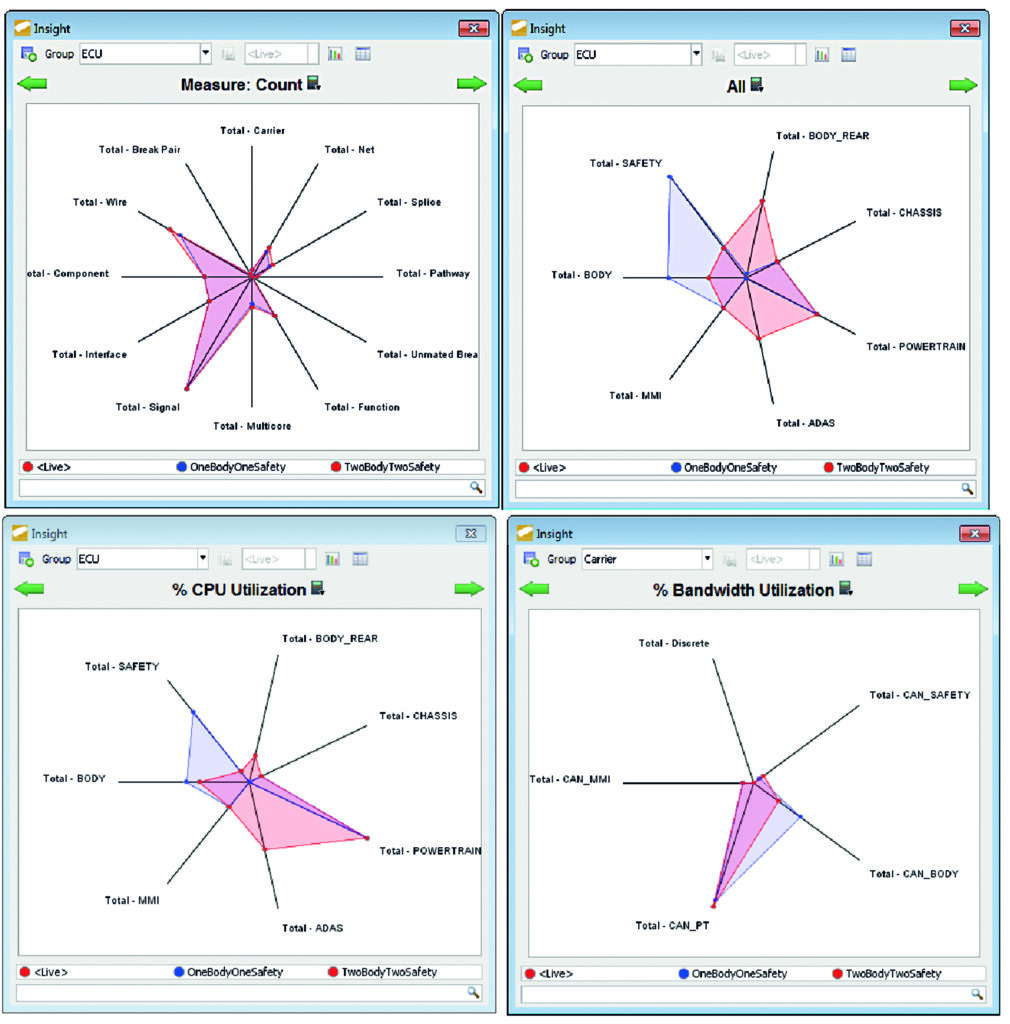A new perspective on vehicle system design

A new paper describes an approach to vehicle system design that uses standardized, hierarchical functions as a single level to describe electrical, electronic, and software content. Domain-specific implementation levels are then generated in a synthesis process, and evaluated using suitable metrics. The focus is on rapid, iterative optimization and on cross-domain architecture evaluation and validation, enabled by a comprehensive digital twin.
Function based system engineering
Standard functional approaches to describing and developing system architectures are poorly suited to performing architectural evaluations as technical content descriptions are separated into various levels each requiring extensive definition to be useful. Furthermore, these definitions are cumbersome to analyze and work with. Assessing the relative merits of a given architectural definition is slow, laborious and difficult. As a result, the evaluation of a change in function allocation – for example of a software component on a particular control unit – takes too long to provide truly meaningful results for each individual choice to be evaluated.
Overall, this significantly hampers architecture studies. The provision of the necessary data and calculations of the desired metrics can, in certain circumstances, take more time than planned for the entire project!
Functional modeling
The alternative approach described here uses standardized, hierarchical function models combined on a single level to describe the technical content of system architecture. In this context, standardized means that individual functions can be separated from their eventual implementation as a hardware, driver, or software component. Instead of distributing the models across various, sometimes redundant levels the individual domain-specific descriptions can be combined within a single functional abstraction, thereby eliminating the lengthy mapping process. Communication between individual functions occurs via signals that can be standardized as either software, electrical, or bus signals. All artifacts can be linked with a set of rules from a detailed options/variants model. The component models for hardware, software, and electrical and network communication can thereby be integrated, and their semantic dependencies checked and validated concurrently using design rules checks.
In this way it is possible to capture the technical, variant-driven content of the downstream implementation domains (hardware, software, network, and electrical) as early as the functional abstraction level, and to validate this content across all variants.
If the functional designs are captured as described, downstream implementations (hardware, software, serial bus systems and electrical distribution) can be created automatically, via rules-based synthesis. The result of this synthesis is the integrated implementation across the four domain types (hardware, software, network communication and electrical) of the functional description through a comprehensive digital thread. Semantic consistency can be analyzed in real time using design rule checks, and any necessary warnings or error messages generated.
Metrics drive real-time analysis
As early as this synthesis process, metrics for technical evaluation can be calculated. These metrics can be configured to show a wide variety of information. For example, for multiplex networks interesting metrics include load, tolerance, and overhead. Metrics can also be calculated to show projections for cost, weight, headroom, reliability or re-use.

Changes in architectural definitions or domain implementations are immediately reflected into the metrics, allowing real-time analysis. As a result, this process is ideally suited to evaluating alternative implementations and revised functional content. Issues of optimum functional partitioning, electrical optimization, cost and runtime optimization can thus be addressed iteratively and interactively.
Tying it all together
The approach described in this paper uses the functional abstraction to consolidate the various E/E domains at a single level. This in turn allows rapid evaluation of implementation alternatives, while preparing data for use in detailed design.
For such architecture evaluation and validation, existing approaches based on UML or SysML-like meta-models are less suitable, because of the technical effort and knowledge needed. The related complexity allows virtually no scope for achieving the adequate or necessary level of detail for a comprehensive evaluation in the available time.
To learn more about this new approach, please download our paper A holistic approach to vehicle system design.
You may also enjoy:


